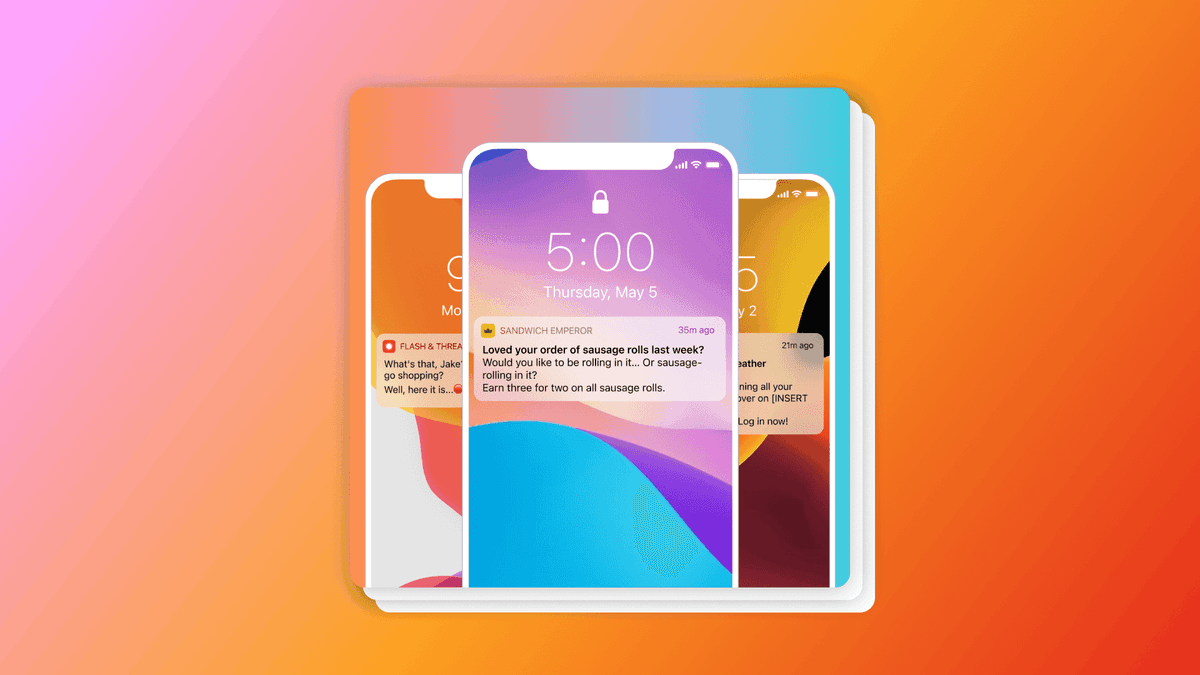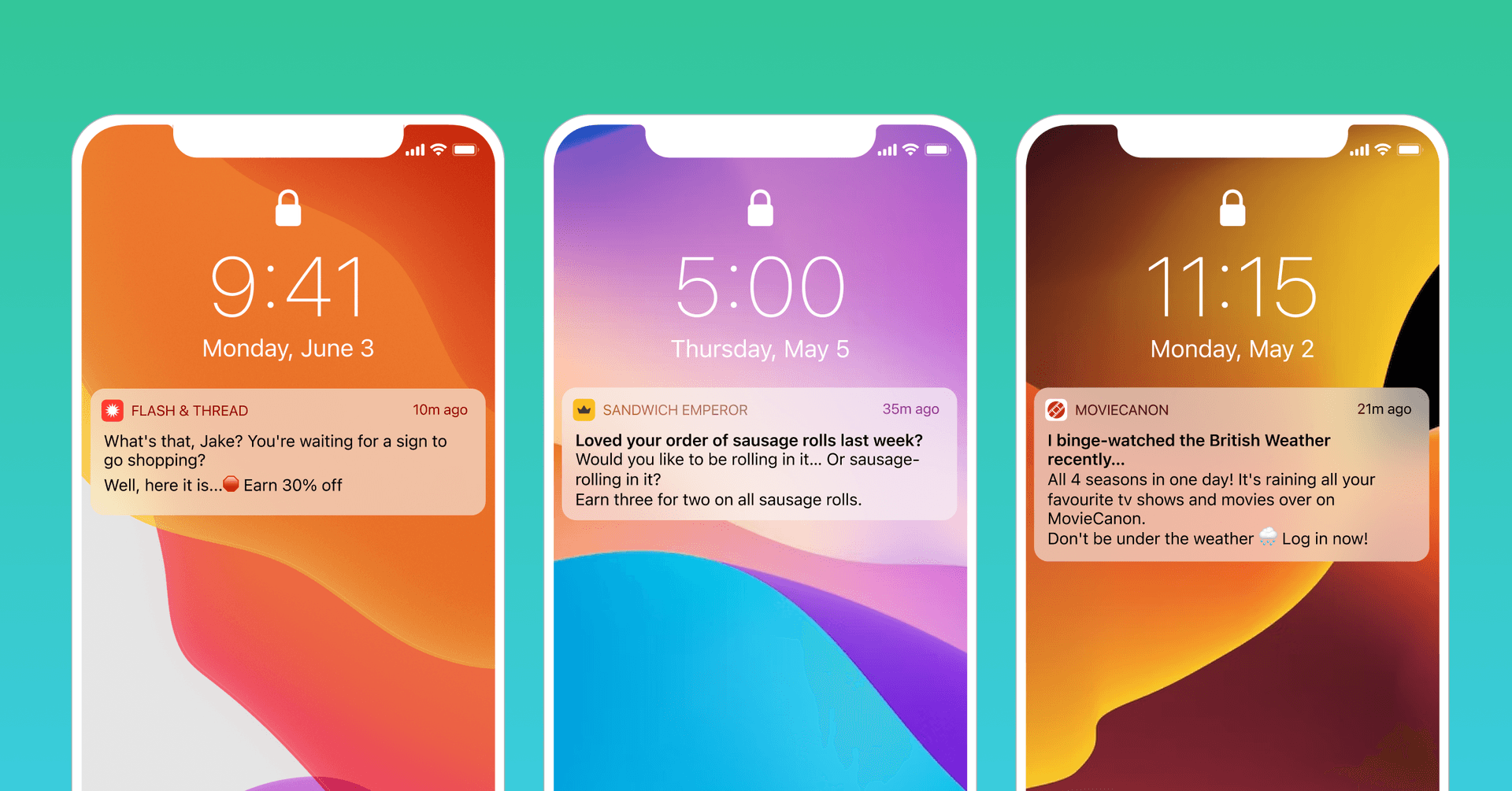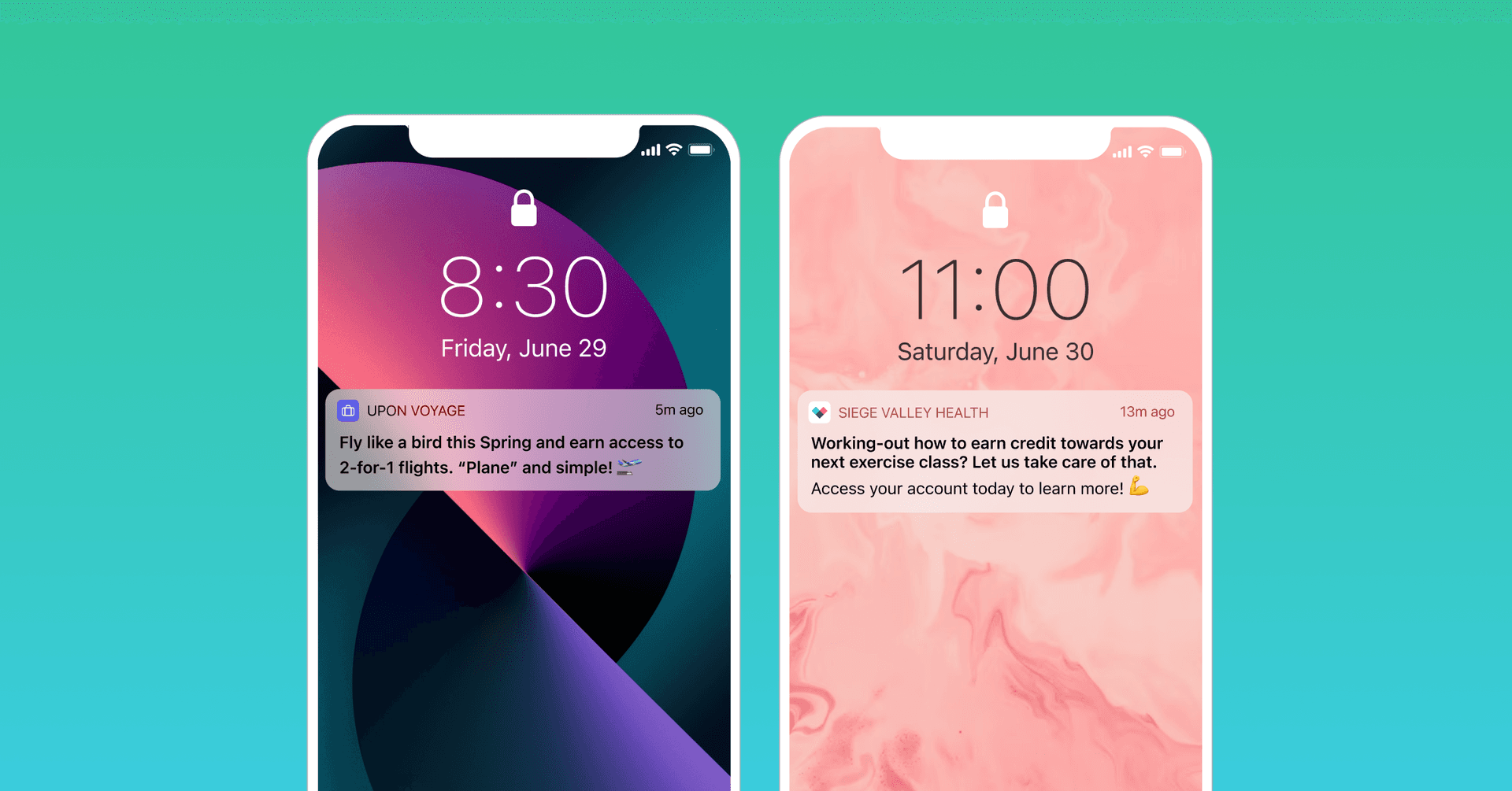What Makes the “Perfect” Mobile Push Notification: Check Out Our Top Dos and Don’ts
Published on January 30, 2023/Last edited on January 30, 2023/6 min read


Team Braze
Today, the average smartphone user receives over 40 push notifications a day. That’s unsurprising, considering that push is a powerful engagement tool for cementing customer relationships and boosting revenue. In recent years, push has established itself as a key pillar of cross-channel campaigns— capable of driving engagement and going a long way toward helping brands develop, sustain, and retain customer relationships over time.
That’s why we decided to look at what went into creating a “perfect” push notification—or at least what elements associated with these messages performed the best when it came to click-through rates.
Based on analysis of over 115,000 brand messages sent in Europe over the past 18 months and a consumer survey of 2,000 UK customers, Braze has identified the elements of the top-performing messages. And for a bit of fun, we’ve partnered with an expert in microcopy—one-liner comedian and winner of Ireland's Funniest Joke, Sean Hegarty—to craft the “perfect” push notification. Here’s what we learned:
Choose Emojis Carefully
The data showed that certain words or phrases are more likely to turn off customers than others. Promotional messages with the words “promo code,” “offer,” and “free” were the least effective in the study; we also found that certain emojis tended to underperform, including: smiling face with heart eyes 😍, party popper 🎉, money bag 💰, and fire 🔥. The more effective words and emojis proved to be “see” and “access”, and flexed bicep 💪, green heart 💚and trophy 🏆
Another learning? Customers are prone to rejecting complex messages. Overuse of links, emojis, digits, dates, and symbols such as “%” and “!” pile up, resulting in notifications becoming less effective.
GOOD EXAMPLES: Sean Hegarty’s PERFECT PUSH


Three Strikes and You’re Out
Customers won’t hesitate to turn off notifications or delete an app if they feel bombarded. On average, brands have just three chances when it comes to bad notifications. Surveyed customers indicated that, on average, they switch notifications off after receiving three irrelevant messages. One in ten (11%) will switch them off after just one irrelevant push.
Over half of the surveyed customers (58%) say they’ve deleted an app in the past year for sending too many irrelevant notifications. More than a third (39%) have turned off app notifications for brands that sent irrelevant messages.
Being Helpful Matters
To build solid relationships and retain customers, brand notifications must be genuinely helpful and have the customer’s best interests at heart, the study found. Surveyed consumers say they most value notifications that remind them about an unpaid bill (29%), update them on an existing booking, such as sharing a new flight time or restaurant availability (26%), or provide reminders about their friends’ or families’ birthdays (23%). This is particularly important when consumers are being more mindful of their spending. Alerts about new content and features or streak reminders—encouraging users to take an action every day to maintain a streak—are the least desirable.
Overly promotional notifications can also risk damaging perception. With many consumers being more mindful of spending than ever, surveyed people say they get multiple notifications enticing them to buy something (88%), which they find annoying (41%). But for more than one in ten, this goes further, with consumers saying it makes them anxious (12%), or impacts their mental health (9%). By contrast, Braze data uncovered that “earning” points or cashback message variations would often receive higher engagement.
Messages that are personalized to individual users are also more appealing. Notifications that include a user’s name or are aimed at small subsets of a brand’s total audience performed better across all KPIs, especially using event-based or custom attribute-based targeting.
Six Tips for Successful Push Notifications
So, without further ado, here are our top tips when it comes to creating mobile push notifications:
- DO keep it simple: As links, emojis, digits, “%”s, dates, and “!”s pile up, users start to lose interest, possibly because these complex messages are hard to skim. Think about using words where possible (e.g. thirty percent instead of 30%).
- DO make it personal: Messages aimed at small subsets of your total audience perform better across all KPIs, especially using event-based or custom attribute-based targeting. Also, messages that include a user’s name are generally more successful.
- DO think about urgency: Notification messages that convey a sense of urgency with phrases like “don’t miss out” and “limited offer” are 37% more likely to be opened compared to other messages.
- DON’T push promotions: variations of “earn” (“earn points,” “earn cash back,” etc.) receive higher engagement compared to “save.”
- DON’T worry about word count: The study found no correlation between the length of a message and how well it performed.
- DON’T follow the crowd: Users love uniqueness. The least-liked words and emojis are all very common, while the most liked are very rare, helping brands stand out. Some brands benefit from using unusual emojis as a signature or secondary logo (e.g., a company with green branding might benefit from tagging messages with a green heart).
Final Thoughts
Push messages are a critical part of a cross-channel engagement strategy. The best examples build customer loyalty; the worst can switch people off forever. While there’s no such thing as a universally “perfect” push notification, if you're attempting to connect with a customer through their phone lock screen, you must offer something timely, personal, and useful. Get it right, and you’ll build stronger relationships with customers that keep them engaging with your brand repeatedly.
Interested in learning more about push notifications? Check out our guide: Push Notifications: What They Are, How They Work, and Why They Matter.
Methodology
All data, unless stated otherwise, is taken from the Perfect Push study by Braze, which combines data from the Braze customer engagement platform with a consumer survey.
Braze analyzed marketing mobile push message variations from brands based in EMEA sent between February 2021 and August 2022. After removing non-English message variations, this left a sample of 117,980 message variations.
Braze also commissioned independent market research company, Censuswide, to survey a nationally representative sample of 2,000 UK customers aged 16 and over, between November 23-25, 2022.
Related Tags
Be Absolutely Engaging.™
Sign up for regular updates from Braze.
Related Content
View the Blog
The new inbox reality: How iOS changes are reshaping email marketing

Aparna Prasad

Experience optimization: Turning data insights into better journeys

Team Braze

December 2025 Bonfire Marketer of the Month: Jagex’s Emma Oliver
